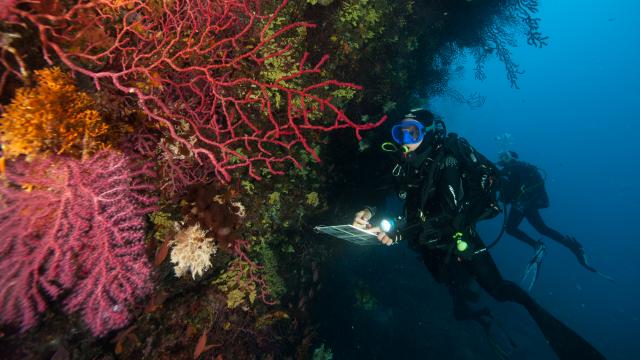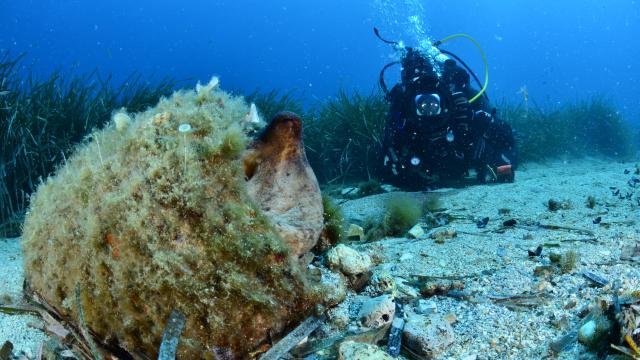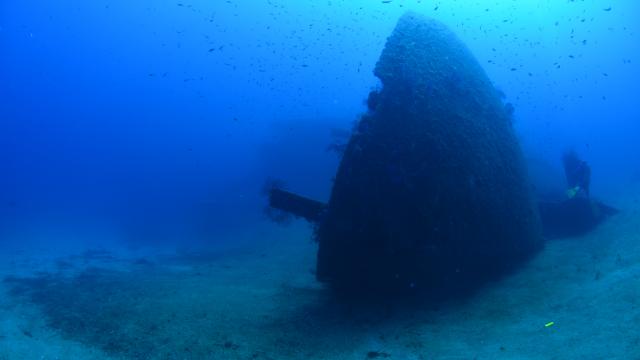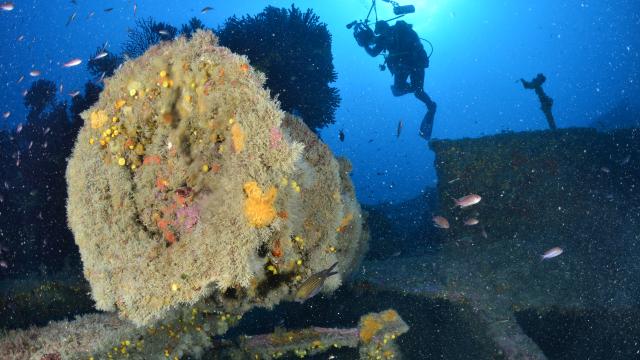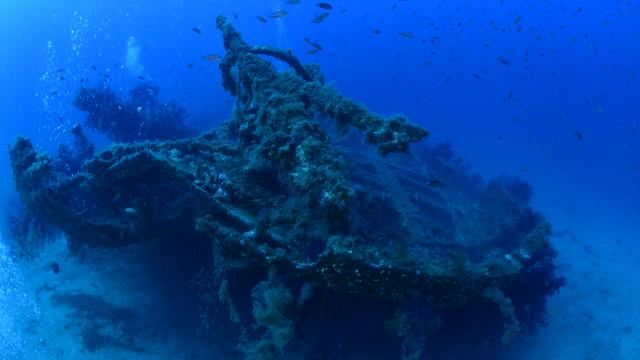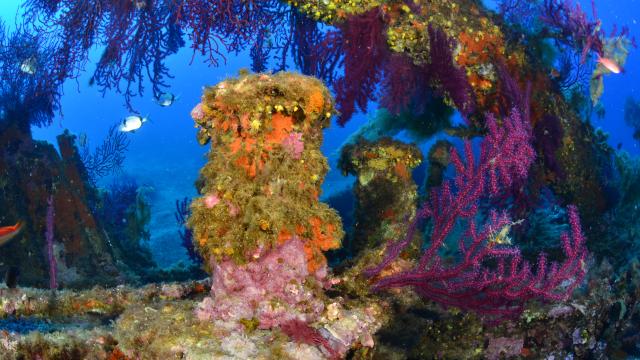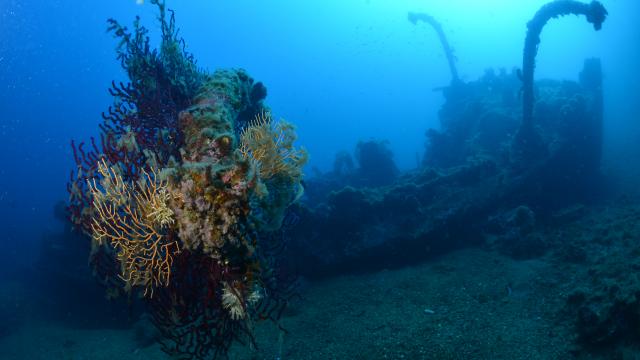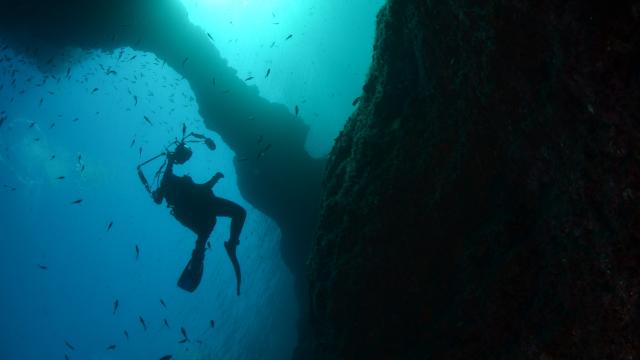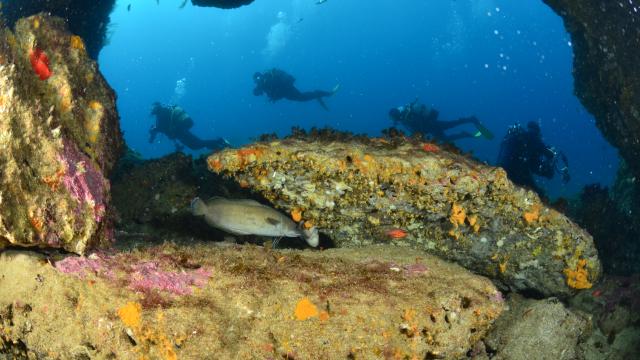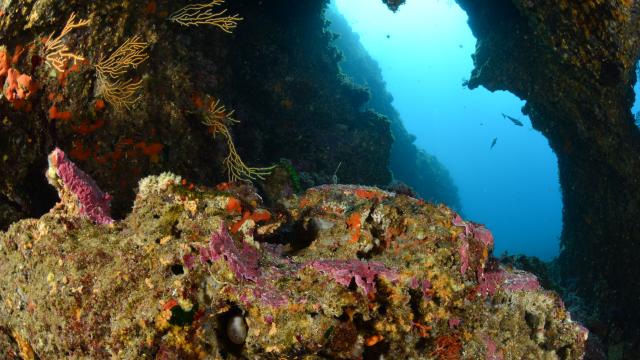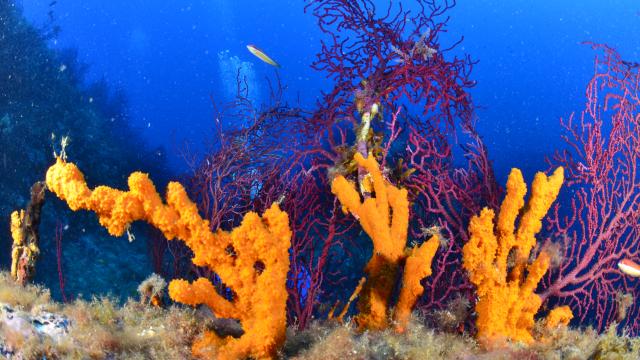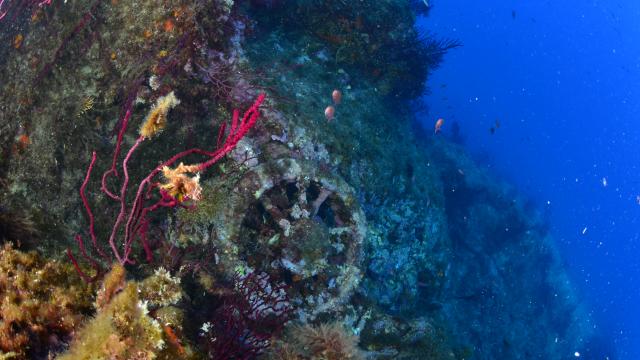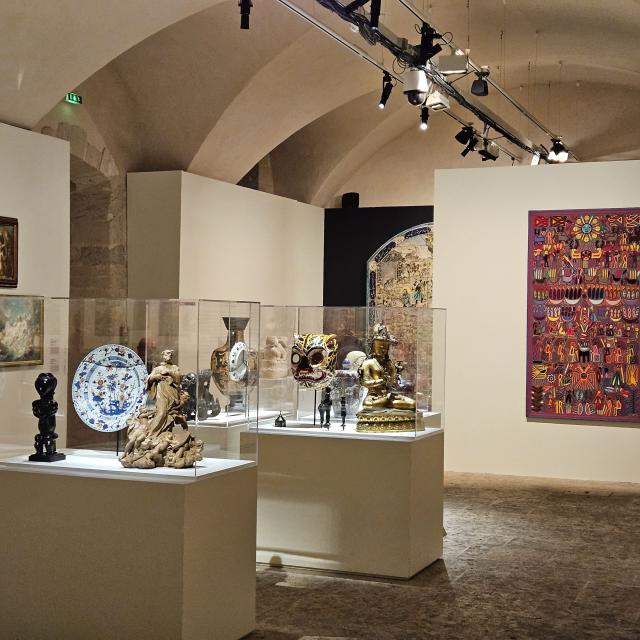Marseille is the capital of diving in the Mediterranean and the Provencal coastline. There are many places to dive. Between shipwrecks or aeroplane wrecks, drop-offs, caves and arches, the underwater world is full of beauty that offers living spaces to a rich and luxuriant fauna and flora. There is something for everyone. We are going to present you a selection of the best diving spots which for the great majority offer the possibility of being accessible to divers whatever their level.

The best spots for diving in Marseille
A rich underwater heritage
Frioul archipegalo: the Junker 88
It is a wreck of a German bomber which in 1943 was forced to ditch before sinking. The plane lies at the bottom of the Grand Souffre bay at a depth of less than 53 metres. Its state of preservation is remarkable, as it has not broken up. This dive site requires a level 3.
Planier lighthouse: 2 shipwrecks
The Dalton is a cargo ship that sank in 1928. The wreck is broken up over 160m², between 15 and 30 metres deep. A level 1 diver can explore the upper part of the wreck. With the help of a dive light, some fish can be spotted.
The Chaouen is a cargo ship that ran aground in 1970. The wreck is easily accessible as the upper part is less than 10 metres deep. With a length of 85 metres, several dives are necessary to visit it from top to bottom.
Maïre island : Lebanon and the Pharillons
Lebanon is the remnant of a terrible shipwreck of an ocean liner that was involved in a collision with another ship in 1903. More than 100 passengers lost their lives. It is a popular diving site as it is accessible to all levels. For over 100 years the wreck has been well preserved and is home to a rich aquatic life. Soft corals of all colours, bonito and tuna have made their home here.
Les Pharillons is a sumptuous natural underwater site consisting of a steep drop off to 45 metres and a plateau at 25 metres. Not forgetting the arches where many species can be observed: bass, sea bream, sars, barracudas, rainbow wrasses and scorpion fish live together. The marine flora is not to be outdone: cave sponges and yellow anemones, Reteporella grimaldii… This is certainly one of the most beautiful dive sites.
'Pierre de Briançon' at Jarre Island
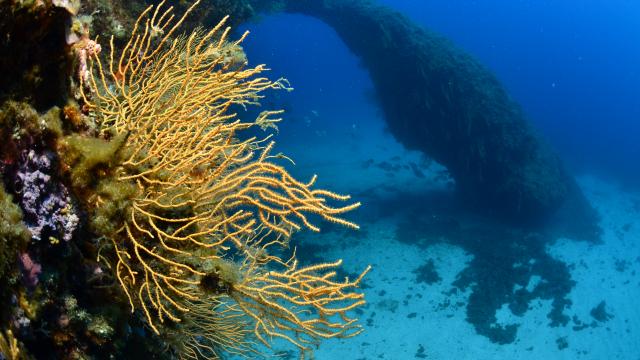
The site can be seen from the sea by a large tooth-shaped rock detached from the island. Divers will find a large and very photogenic arch at 25 metres below sea level, covered in soft corals, around which schools of fish gravitate.
Arches of Plane at Plane Island
It is an exceptional diving spot at a depth of 18 metres, composed of a succession of caves, arches and vertical shafts. The whole site is home to all the fauna and flora of the shallow waters of the Mediterranean Sea: Damselfish, rainbow wrasses, sars, red mullets, rock algae and posidonia. When the sun is at its zenith, it offers a beautiful play of light.
Grand Congloué at Riou island
Grand Congloué is the spot where diving in Marseille has earned its reputation. Recommended for level 2 and 3 divers, there are three drop offs: The Cassis stone located between -25 and -65 metres, the soft corals corridor at -55 metres and the Falco cove at -40 metres. This is the best site for archaeological diving and to follow in the footsteps of Cousteau who made the site famous with his film “The Silent World“. Amphorae have been redeposited at 14 metres below sea level and it is also possible for a level 1 to dive. It was near the Grand Congloué that Luc Vanrell from Marseille discovered pieces of planes, including that of Antoine de St-Exupéry.
Did you know?
The role of the weather and the wind direction are determining parameters for diving, and in Marseille two winds predominate: The Mistral and the East wind.
The Mistral wind is oriented north, northwest and brings good weather and clears the sky. A cold, dry wind, it cools the surface waters of the harbour radically. Its force quickly raises short and rough waves, accompanied by strong spray. Marseille has more than 120 days of Mistral per year.
The East wind is oriented south-east and when it blows, it prevents diving between Cassis and Maire island. It is always hot and humid and often associated with rain. It raises waves longer than the Mistral wind and is accompanied by a current that can become dangerous as it pushes out to sea. The sea temperature is warmer, but visibility is more blurred.
- 29€*24h
- 39€*48h
- 47€*72h


